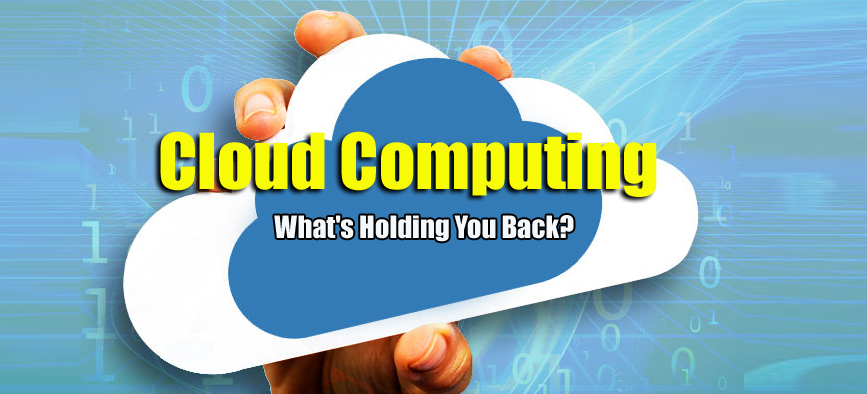
Organizations are discovering that Cloud computing provides immediate access to the tools needed to digitally transform their business and improve customer understanding. Many businesses are still reluctant to make the move to the Cloud despite these advantages Although there are many benefits in adopting cloud computing, there are also some barriers too that holds back cloud computing.
1. Security and Privacy
Cloud computing represents a new computing model, there is a great deal of vagueness about how security at all levels (e.g., network, host, application, and data levels) can be achieved. That doubt has consistently led information executives to state that security is their first concern with cloud computing.

The ability of cloud computing to adequately address privacy has been called into question. Organizations today face abundant different requirements attempting to protect the privacy of individuals’ information, and it is not clear whether the cloud computing model provides adequate protection of such information, or whether organizations will be found in the destruction of regulations because of this new model.
2. Connectivity and Open Access
The full potential of cloud computing depends on the accessibility of high-speed access to all. Such connectivity, rather like electricity availability, internationally opens the possibility for industry and a new range of consumer products.

Connectivity and open access to computing power and information availability through the cloud promotes another era of industrialization and the need for more urbane consumer products.
3. Reliability
Enterprise applications are now so critical that they are reliable and available to support 24/7 operations. In the event of crash or outages, emergency plans must take effect smoothly, and for disastrous or catastrophic failure, recovery plans must begin with minimum disruption.

Additional costs may be linked with the required levels of reliability; however, the business can do only so much to mitigate risks and the cost of a failure. Establishing a track record of reliability will be a must for widespread adoption.
4. Interoperability
The interoperability and portability of information between private clouds and public clouds are grave enablers for broad adoption of cloud computing by the enterprise. Many companies have made significant progress toward standardizing their processes, data, and systems. This process has been enabled by scalable infrastructures. Even with these enhanced platforms, the speed at which businesses change may still outpace the ability of IT organizations to respond to these changes. SaaS applications delivered all the way through the cloud provide a low-capital, fast-deployment option.

Depending on the application, it is critical to integrate with traditional applications that may be resident in a separate cloud or on traditional technology. The standard for interoperability is either an enabler or a barrier to interoperability and permits maintenance of the integrity and consistency of a company’s information and processes.
5. Economic Value
The expansion of cloud computing is predicated on the return on investment that accrues. It seems sensible that by sharing resources to smooth out peaks, paying only for what is used, and cutting upfront capital investment in deploying IT solutions, the economic value will be there. There will need to carefully balance all costs and benefits associated with cloud computing—in both the short and long terms.

Hidden costs may include disaster recovery, application modification, and data loss insurance. For example, it might not be cost effective to utilize multiple autonomous SaaS applications. Each may contract for disaster recovery program services. This development may be the most cost-effective approach; however, there is a risk that the business transition costs from one solution to another may change the cost and benefits system, and hence the solution that should be employed.
6. Changes in the IT Organization
The IT business will be affected by cloud computing, like the other technology shifts. There are two dimensions to shift in technology. The first is acquiring the new skill sets to deploy the technology in the context of solving a business problem, and the second is how the technology changes the IT role. During the COBOL era, users rarely programmed, the expectations of the user interface varied, and the adaptability of the solution was low.

Training was delivered in separate manuals and the user used the computer to solve problems only through predefined paths. With the advent of fourth-generation languages, roles within IT, such as system analyst and programmer, became merged into analyst/programmer, users started to write their own reports, and new applications, including data entry, and query programs, could be quickly deployed in weeks.
7. Political Issues Due to Global Boundaries
In the cloud computing world, there is unpredictability in terms of where the physical data resides, where processing takes place, and from where the data is accessed. Due to this unevenness, different privacy rules and regulations may apply. Because of these varying rules and regulations globally, politics becomes an element in the adoption of cloud computing, which is effectively multijurisdictional. For cloud computing and Bootstrap Business is to continually evolve as a borderless and global tool, it needs to be alienated from politics.
Presently, some major global technological and political powers are making laws that can have a negative impact on the development of the global cloud. However, cloud computing service providers are rapidly dealing with this issue. You can’t have a working cloud of information and services to depict from and build on if someone or something is constantly manipulating the data held within it, or worse if something is blocking it from your view to accomplish a hidden agenda. Politics are affecting the scalability of the Internet, the availability of Internet access, the free flow of information, and the cloud-based universal economy on a daily basis.
Also read about:
7 Incredible things to do in Nepal
The Changing Face of Modern Healthcare
How social media marketing agencies work








